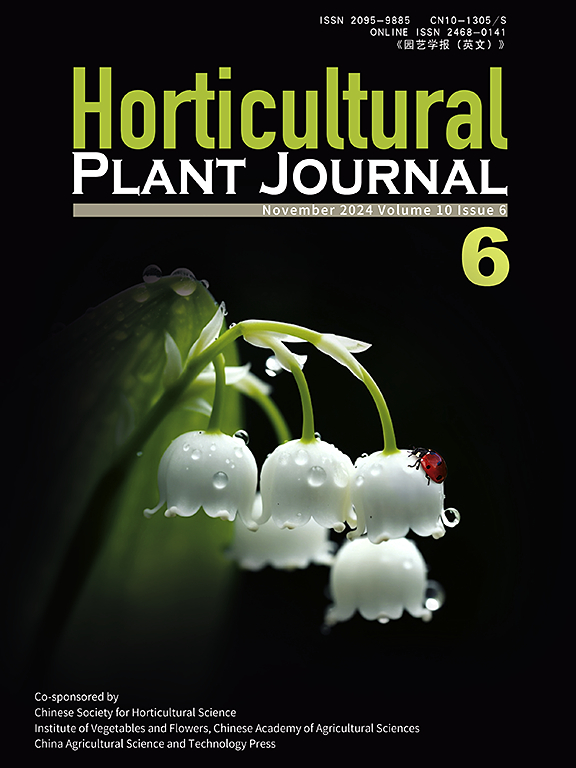Integrated analysis of the metabolome and transcriptome reveals the effect of the polyamine biosynthesis pathway on the cold resistance regulation mechanism in Solanum habrochaites
IF 6.2
1区 农林科学
Q1 HORTICULTURE
引用次数: 0
Abstract
Constant exposure of tomato fruit to low temperatures (LT) often results in insufficient energy to sustain growth and development. Polyamines (PAs) are essential substances for cell division, development and stress responses in plants. Integrated metabolomics and transcriptome analysis showed that the PA biosynthesis pathway was significantly enriched in通过代谢组学和转录组学的综合分析,揭示了多胺生物合成途径对龙葵抗寒性调控机制的影响
长期暴露在低温(LT)下的番茄果实往往导致能量不足,无法维持生长发育。多胺(PAs)是植物细胞分裂、发育和逆境反应的必需物质。综合代谢组学和转录组学分析表明,单胞多糖(PA)的生物合成途径在单胞多糖(Solanum habrochaites)中显著富集。鸟氨酸脱羧酶(Ornithine decarboxylase, ShODC1)是PA合成途径的关键酶,对LT胁迫高度敏感。短暂沉默ShODC1显著降低了番茄的离子通透性、抗氧化能力和光合作用,降低了亚精胺合成酶(ShSPDS)和精胺合成酶(ShSPMS)的表达和腐胺(Put)的积累,从而降低了番茄的耐寒性。本研究证实了PA生物合成途径影响SH的耐寒性,并分析了ShODC1在低温胁迫下的生理生化功能,为提高栽培番茄的抗寒性提供了新的理论依据。
本文章由计算机程序翻译,如有差异,请以英文原文为准。
求助全文
约1分钟内获得全文
求助全文
来源期刊

Horticultural Plant Journal
Environmental Science-Ecology
CiteScore
9.60
自引率
14.00%
发文量
293
审稿时长
33 weeks
期刊介绍:
Horticultural Plant Journal (HPJ) is an OPEN ACCESS international journal. HPJ publishes research related to all horticultural plants, including fruits, vegetables, ornamental plants, tea plants, and medicinal plants, etc. The journal covers all aspects of horticultural crop sciences, including germplasm resources, genetics and breeding, tillage and cultivation, physiology and biochemistry, ecology, genomics, biotechnology, plant protection, postharvest processing, etc. Article types include Original research papers, Reviews, and Short communications.
 求助内容:
求助内容: 应助结果提醒方式:
应助结果提醒方式:


